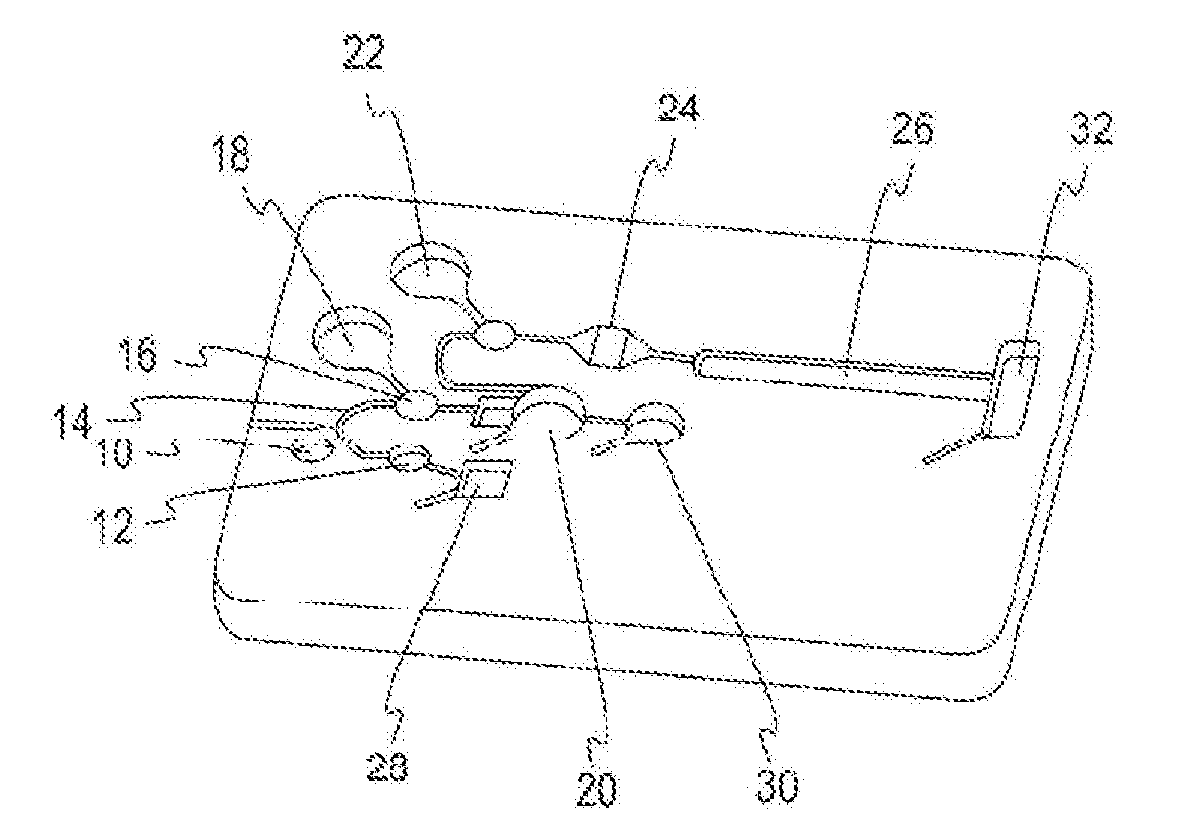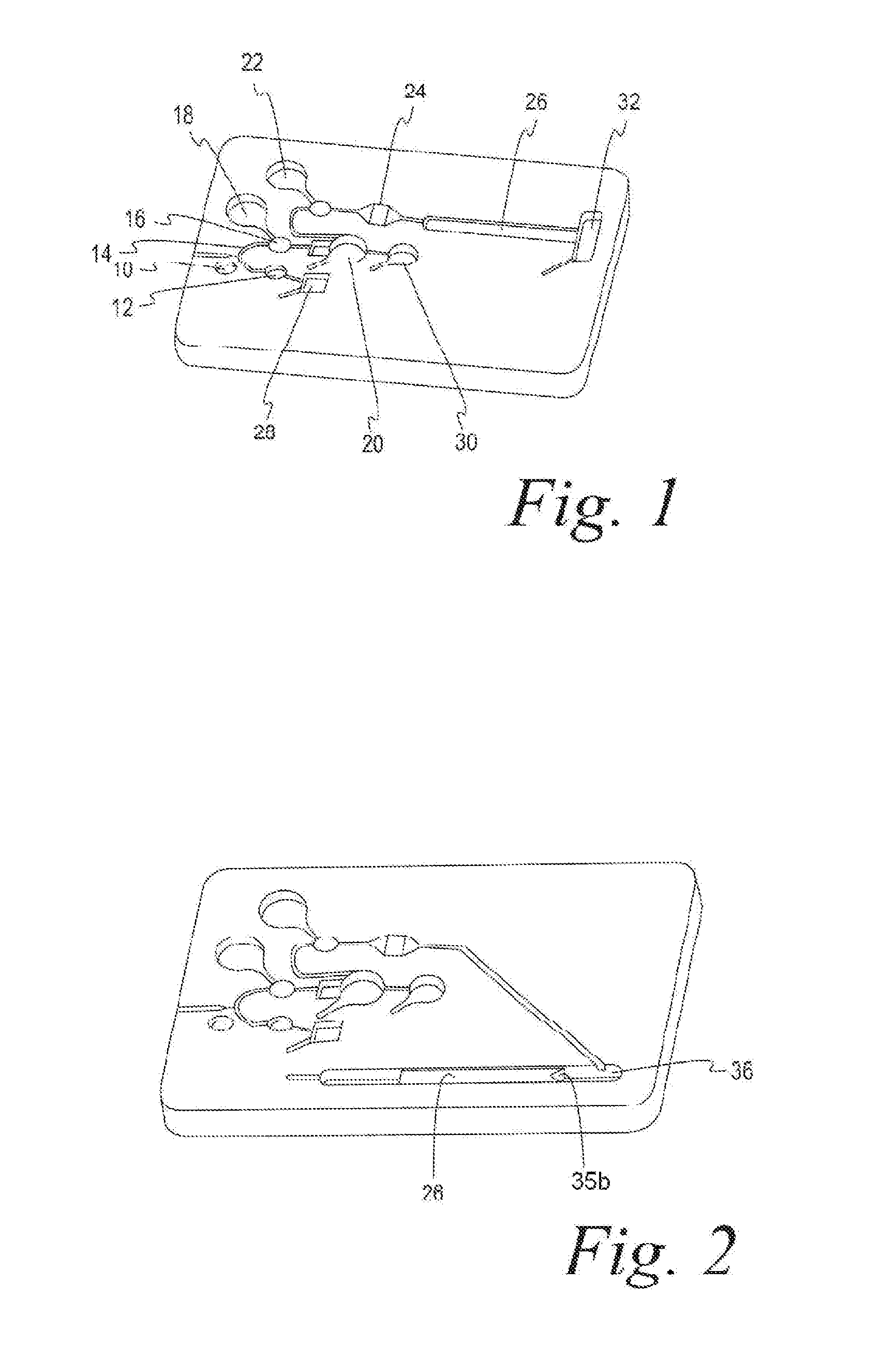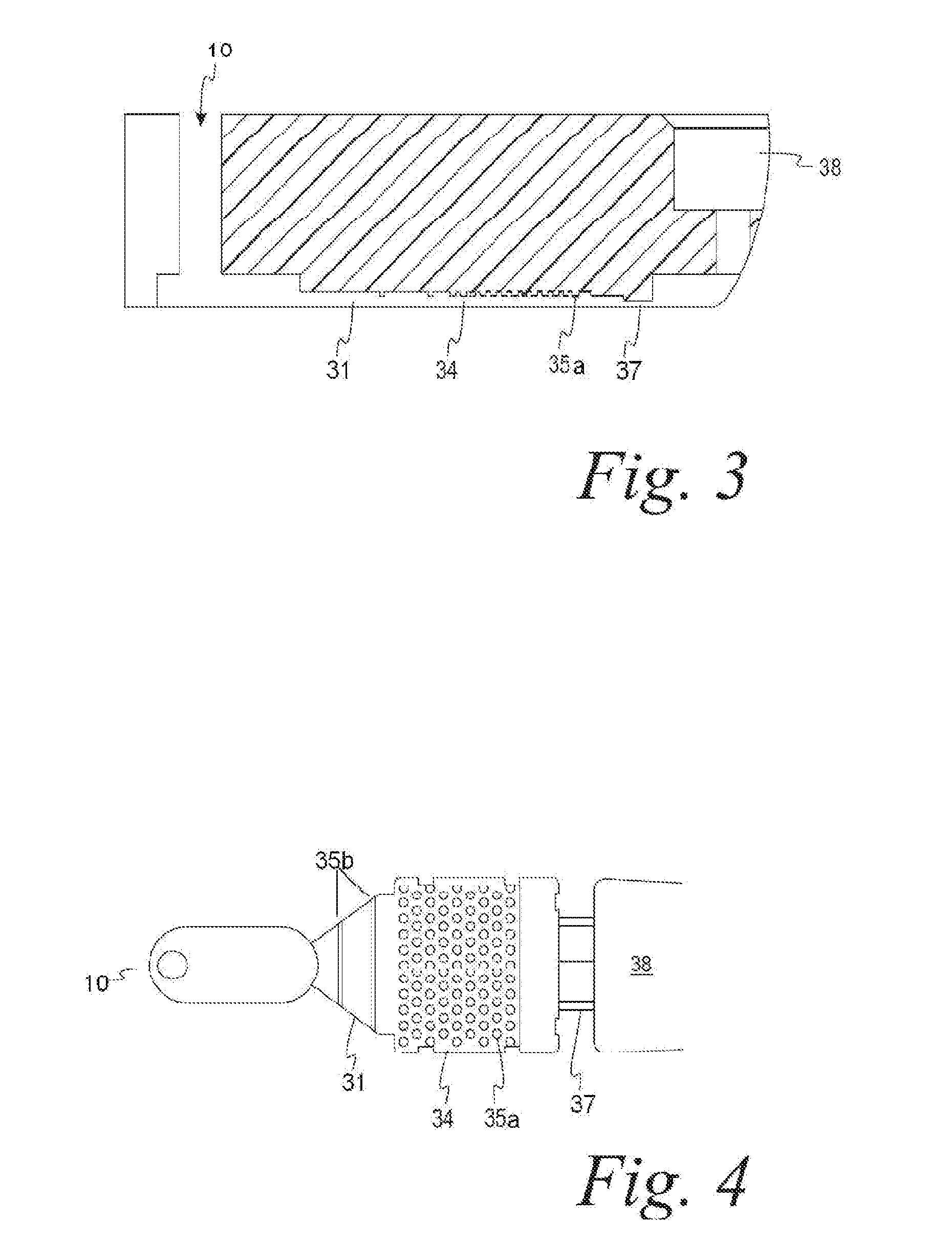Method for uniform application of fluid into a reactive reagent area
a technology of reactive reagents and fluids, applied in the field of microfluidic devices, can solve the problems of inability to uniformly distribute samples over the reagent region, difficult to obtain desired performance, and small sample sizes, etc., and achieve accurate and repeatable assays
- Summary
- Abstract
- Description
- Claims
- Application Information
AI Technical Summary
Benefits of technology
Problems solved by technology
Method used
Image
Examples
example 1
[0055]In this example, a test for HbA1c is carried out in a microfluidic chip of the type shown in FIG. 1. A sample of blood is introduced via sample port 10, from which it proceeds by capillary action to the pre-chamber 12 and then to metering capillary 14. The auxiliary metering well 16 is optional, only being provided where the sample size requires additional volume. The denaturant / oxidizing liquid is contained in well 18. Mixing chamber 20 provides space for the blood sample and the denaturant / oxidant well 22 contains a wash solution. Chamber 24 provides uniform contact of the preconditioned sample with labeled monoclonal antibodies disposed on a dry substrate. Contact of the labeled sample with the agglutinator, which is disposed on a substrate is carried out in chamber 26, producing a color which is measured to determine the amount of glycated hemoglobin in the sample. The remaining wells provide space for excess sample 28, excess denatured sample 30, and for a wicking materia...
example 2
[0058]The test described in Example 1 was repeated, using the modified microfluidic chip shown in FIG. 2. In FIG. 2, the agglutinator chamber 26 was positioned so that the labeled sample flowed “uphill”, i.e. toward the center of rotation, assisted by the wicking action of absorbent material placed at the uphill end of the strip. Equivalent results were obtained. In this case, the microstructure that directs the flow is a ramp 35b leading upward to a plateau onto which the nitrocellulose reagent is placed. In an alternative embodiment, the strip would extend into the pre-chamber 36 which contains the sample liquid.
example 3
[0059]The test of Example 1 is repeated with a microfluidic chip in which the labeled sample entered at the center of the agglutination strip 26 so that the labeled sample wicks in two directions.
PUM
| Property | Measurement | Unit |
|---|---|---|
| widths | aaaaa | aaaaa |
| widths | aaaaa | aaaaa |
| diameters | aaaaa | aaaaa |
Abstract
Description
Claims
Application Information
 Login to View More
Login to View More - R&D
- Intellectual Property
- Life Sciences
- Materials
- Tech Scout
- Unparalleled Data Quality
- Higher Quality Content
- 60% Fewer Hallucinations
Browse by: Latest US Patents, China's latest patents, Technical Efficacy Thesaurus, Application Domain, Technology Topic, Popular Technical Reports.
© 2025 PatSnap. All rights reserved.Legal|Privacy policy|Modern Slavery Act Transparency Statement|Sitemap|About US| Contact US: help@patsnap.com



